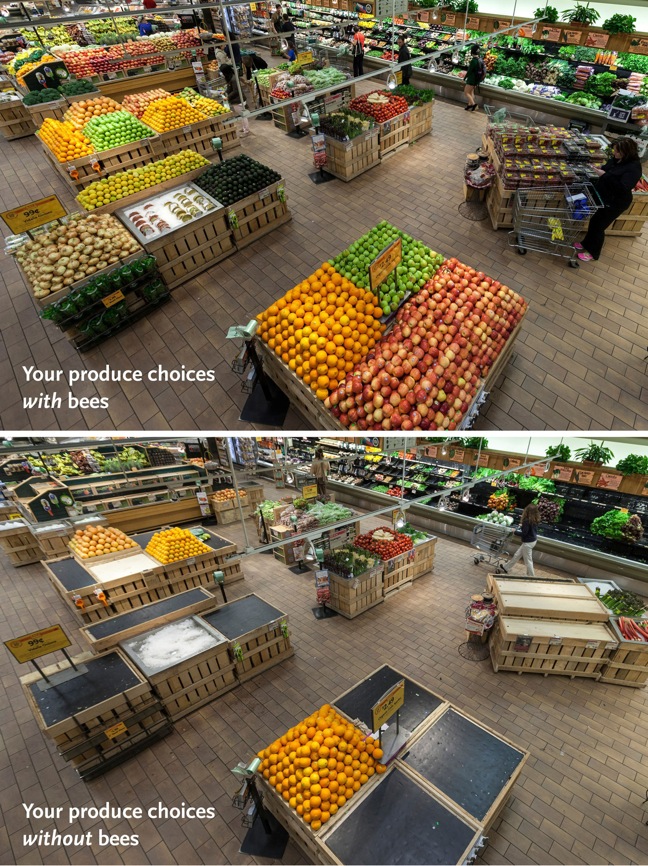One of every three bites of food comes from plants pollinated by honeybees and other pollinators. Yet, major declines in bee populations threaten the availability of many fresh ingredients consumers rely on for their dinner tables.
To raise awareness of just how crucial pollinators are to the food system, the University Heights Whole Foods Market store in Providence, R.I., temporarily removed all produce that comes from plants dependent on pollinators. They pulled from shelves 237 of 453 products—52 percent of the department’s normal product mix.
Products removed included apples, onions, avocados, carrots, mangos, lemons, limes, honeydew, cantaloupe, zucchini, summer squash, eggplant, cucumbers, celery, green onions, cauliflower, leeks, bok choy, kale, broccoli, broccoli rabe and mustard greens.
To help support honeybee populations, for every pound of organic summer squash sold at Whole Foods Market stores through June 25, the company will donate 10 cents to The Xerces Society for pollinator preservation.
“Pollinators are a critical link in our food system. More than 85 percent of earth’s plant species—many of which compose some of the most nutritional parts of our diet—require pollinators to exist. Yet we continue to see alarming declines in bee numbers,” said Eric Mader, assistant pollinator conservation director at The Xerces Society. “Our organization works with farmers nationwide to help them create wildflower habitat and adopt less pesticide-intensive practices. These simple strategies can tip the balance back in favor of bees.”
Whole Foods Market offers four more ways to “bee part of the solution.” Details are online here.







